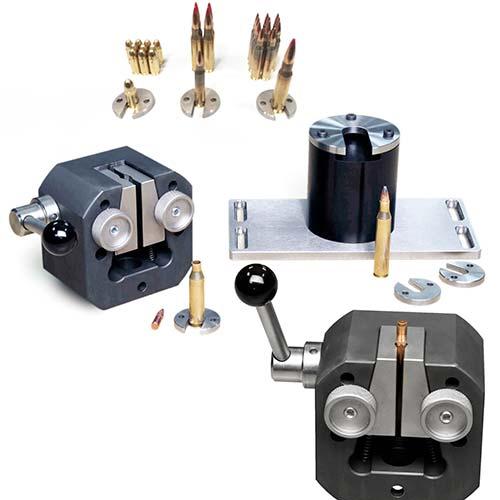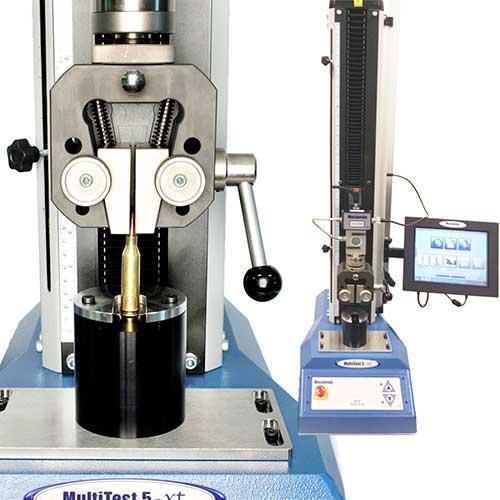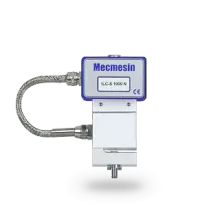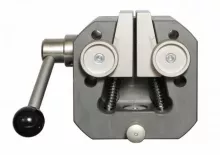
Tension and crimp strength tester for bullet extraction and seating force testing


Solution
- Software-controlled force testing system
- Dedicated fixture matched to calibre size
- Standard wedge grip and compression fixtures
Benefits
- Flexible programming environment to implement different methods
- Ultimate in repeatable testing with interchangeable accessorie
Requirement
When making ammunition, the projectile is set into the casing and it is crimped or sealed in place. The "neck" of the cartridge has natural tension but the crimp/sealant does the bulk of the work in keeping the projectile in place. It sets the minimum force needed to extract the bullet and serves to lock the case mouth inside the bullet cannelure thus protecting against crimp jump and bullet setback.
Bullet pull strength is the force necessary to separate a bullet from the cartridge casing and is one of the many factors that affect ammunition performance. This force can vary, depending on the type and size of the ammunition and even from cartridge to cartridge within the same type and calibre.
Since repeatability is key to a user’s experience with ammunition, ballistics engineers work tirelessly to produce reliable ammunition that will perform the same way time and time again. If pull strengths are inconsistent around the circumference of the bullet, that variation will often translate into irregular trajectories and impacts for projectiles.
Solutions
Leading manufacturers of ammunition rely on Mecmesin pull testers to check the neck tension/crimp strength on their ammunition. Of primary interest is the measurement of the force it requires to pull a projectile out of the case, overcoming friction and the crimp feature.
The rim of the cartridge case is held in a slot within a C-shaped lower fixture, tailored to the calibre of the ammunition, and attached to the base of the pull tester. The bullet is then secured in a wedge grip connected to a loadcell.
The test is conducted at a fixed rate to ensure optimum repeatability and the maximum force encountered is recorded as the ‘bullet pull strength’ by the software of the tensile tester. The same tester, fitted with an upper compression plate probe is able to also measure the seating force required to push down on the projectile, until it slips back into the case.
Test equipment


